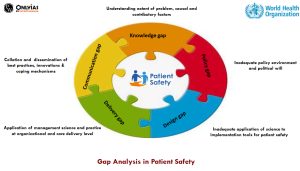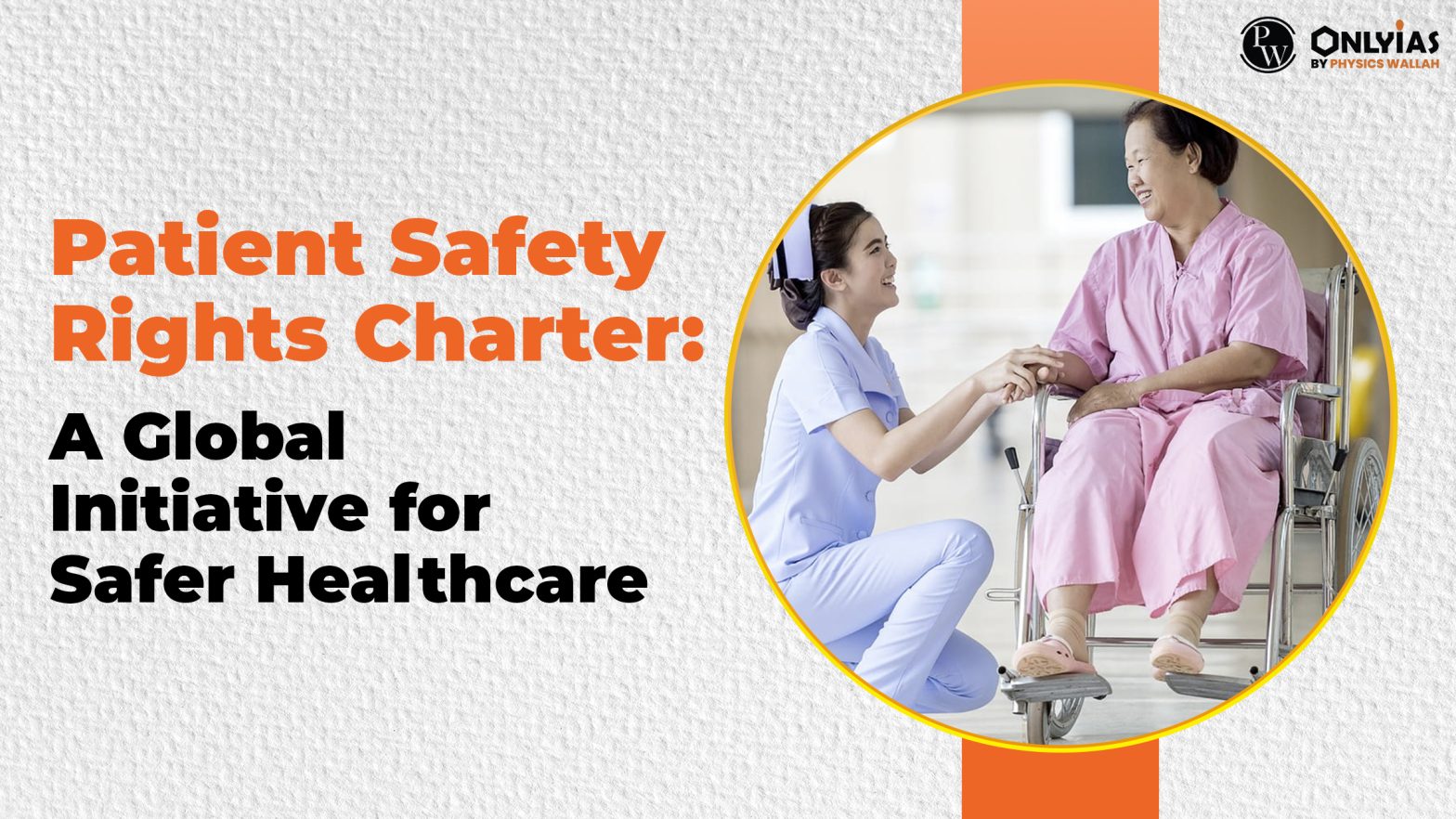Context: This article is based on an Editorial “WHO releases first-of-its-kind patient safety rights charter ahead of Patient Safety Day” which was published in Down to Earth. The World Health Organization (WHO) released the first-ever rights charter outlining the core rights of all patients in the context of safety of health care on September 14, 2023. WHO promotes shifting from a blame-centered approach to a system-oriented viewpoint, emphasizing the comprehension of fundamental systemic flaws in healthcare.
Ensuring Patient Safety Rights: Addressing Common Causes and Factors in Healthcare
- Patient Safety: It is the avoidance of unintended or unexpected harm to people during the provision of health care.
- Common Causes of Harm: According to WHO, common causes of harm in healthcare include medication errors, surgical errors, infections, sepsis, diagnostic errors, and patient falls.

- Factors Leading to Harm: Harm in healthcare can be attributed to various factors, including system or organizational issues, technological aspects, human behavior, and patient-related factors.
- The most errors stem from system or process failures rather than individual actions.
Major Objective of the Patient Safety Rights
- Right to Information:
- Patients have the right to clear and understandable information about their health condition, treatment options, and potential risks.
- Right to Informed Consent:
- Patients have the right to give informed consent before any medical procedure or treatment.
- Right to Privacy:
- Patients’ personal and medical information must be kept confidential and only shared with authorized individuals.
- Right to Quality Care:
- Patients have the right to receive high-quality and safe healthcare services.
- Right to Safe Medication Management:
- Patients have the right to have their medications administered safely and accurately.
- Right to Involvement in Care:
- Patients have the right to actively participate in decisions about their care and treatment plans.
- Right to Cultural Competency:
- Patients from diverse backgrounds have the right to culturally competent care.
Patient Safety Rights Charter: Safeguarding Fundamental Healthcare Entitlements
- Objective of the Rights: The charter serves as a document that defines the core rights of patients related to healthcare safety.

- To Secure Healthcare: The charter delineates the fundamental entitlements of every patient regarding healthcare safety and aims to aid governments and other involved parties in guaranteeing that patients’ voices are acknowledged and their entitlement to secure healthcare is safeguarded.
- Informed Decision-Making: Patients have the right to clear, understandable information about their health condition, treatment options, and potential risks, enabling them to make informed choices.
- Consent and Privacy: Patients must provide informed consent for treatment, and their medical records should be kept confidential, ensuring their privacy is respected.
- Quality Care: Patients deserve safe, effective, and timely healthcare services, free from discrimination, with access to grievance mechanisms to address concerns.
Transforming Patient Safety Rights: The Urgent Need for a Charter
- Disturbing Figures: Data from the Organization for Economic Co-operation and Development (OECD) presents concerning statistics regarding safety rights.
- Approximately 1 in 10 patients experience harm while receiving healthcare.
- Over 3 million deaths occur annually due to unsafe healthcare practices.
- In low-to-middle income countries, as many as 4 in 100 deaths can be attributed to unsafe healthcare.
- For Safety: Investments in patient safety have a positive impact on health outcomes, lead to cost reductions associated with patient harm, enhance the efficiency of healthcare systems, and contribute to rebuilding community trust in healthcare systems.
- The majority of patient harm incidents can be prevented, highlighting the crucial role of involving patients, families, and caregivers in minimizing harm.
- Shift in Approach: The Charter highlights the necessity of shifting from a blame-focused approach to a system-based perspective when addressing patient safety concerns.
Conclusion
- The Charter introduced by the World Health Organization represents a crucial milestone in prioritizing patient safety globally, addressing alarming statistics and advocating for systemic improvements. Embracing this charter is vital to safeguard every patient’s right to safe healthcare, transforming patient safety on a global scale.
![]() 21 Sep 2023
21 Sep 2023




